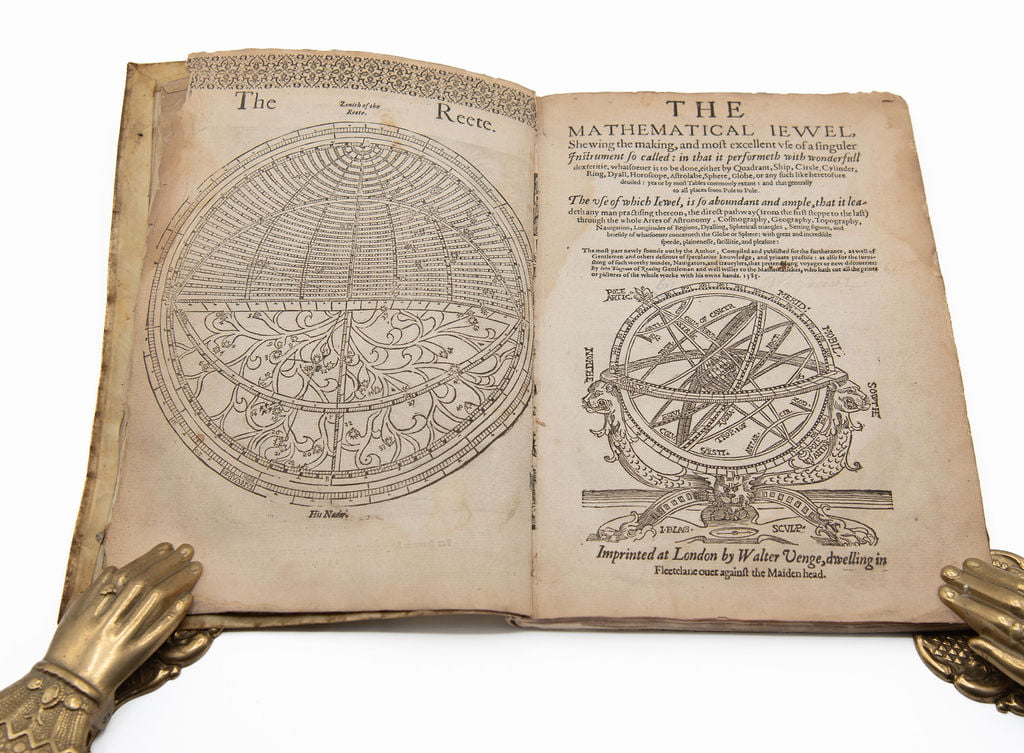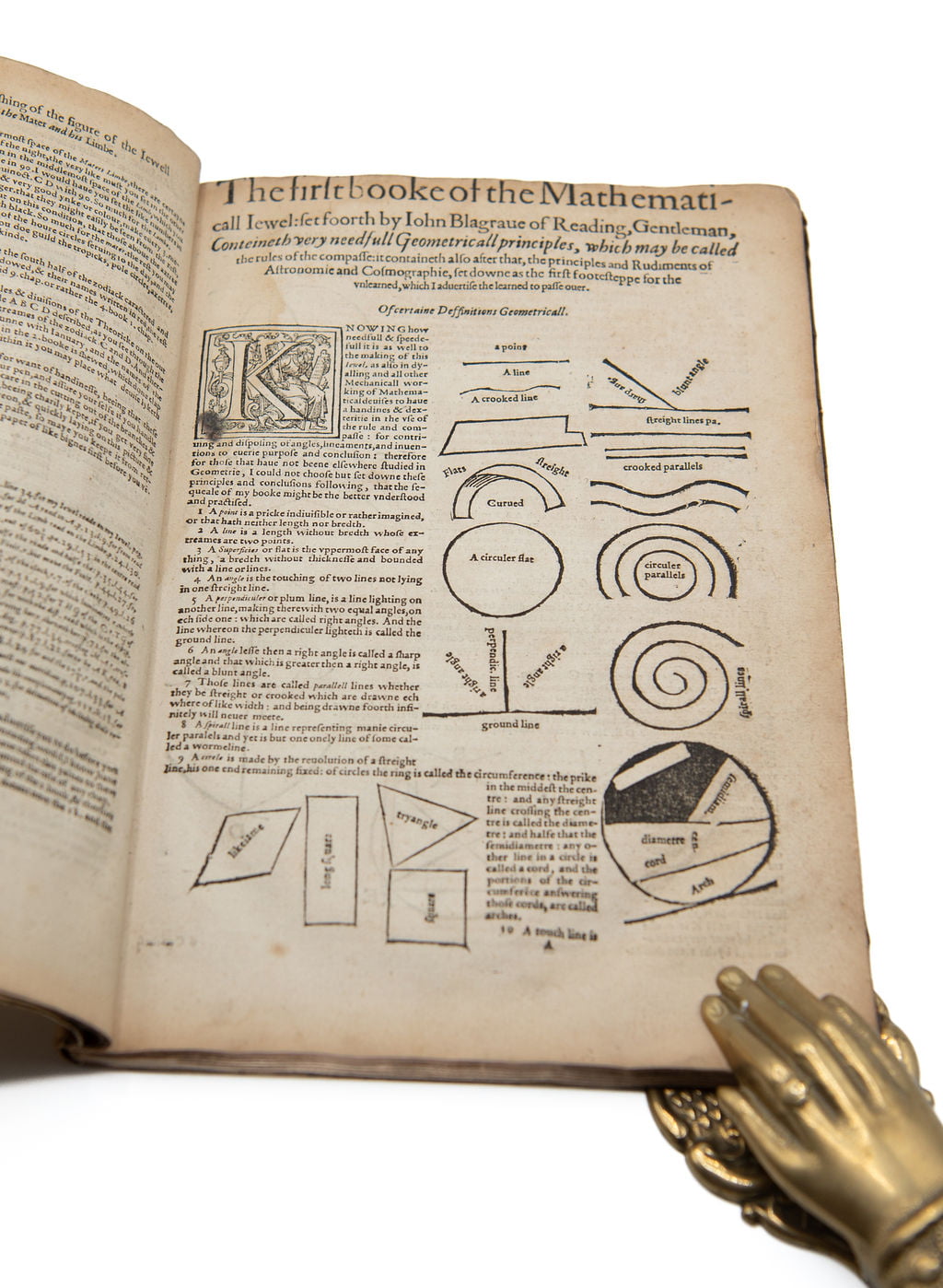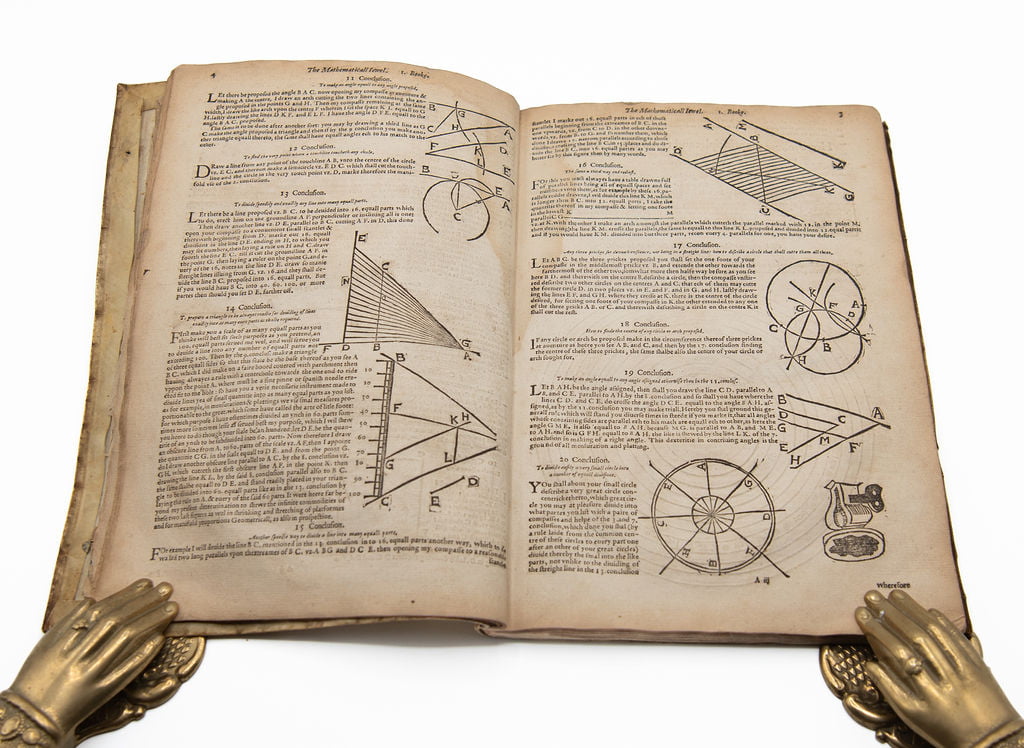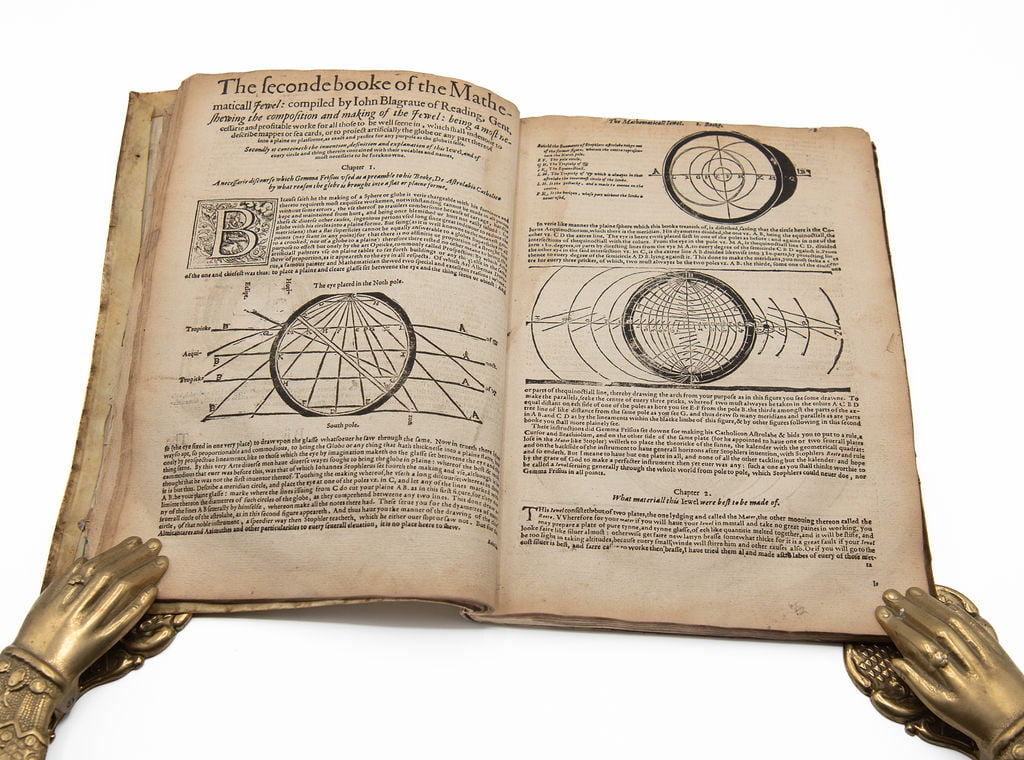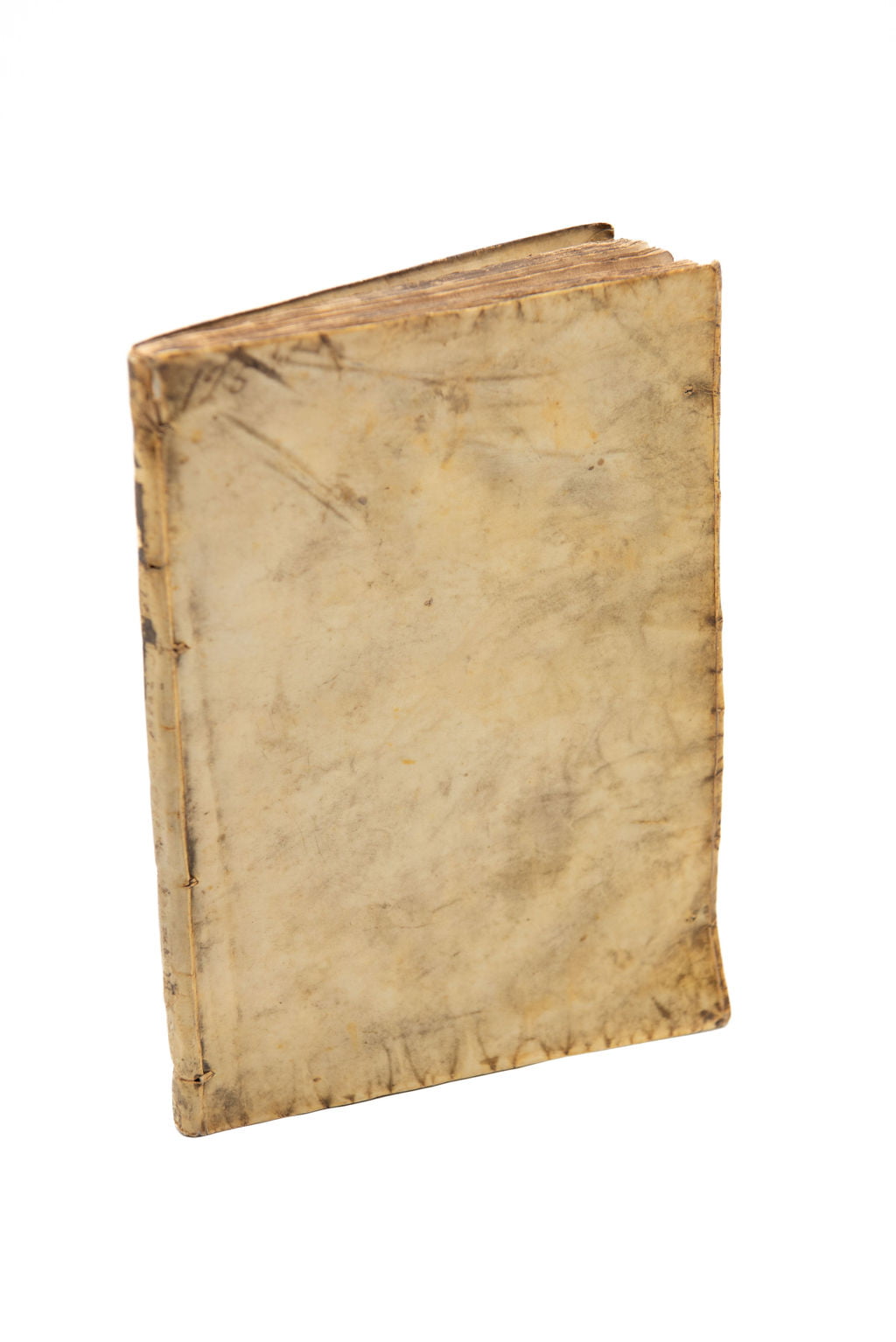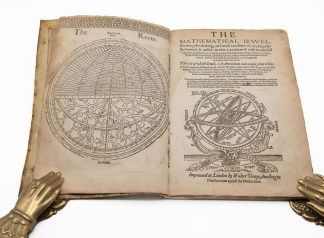BLAGRAVE, John
The mathematicall jewell. Shewing the making, and most excellent use of a singuler instrument so called…
London, by Walter Veng, 1585£27,500.00
FIRST EDITION. Folio. pp. [xii], 124 [par.] 2[par.]² A-P Q². Two leaves with full page woodcut illustrations before title, folded table bound in after c4. Roman letter some Italic. Large woodcut of Blagrave’s astrolabe on title, many woodcut illustrations in text, historiated woodcut initials, typographical headpieces, Erwin Tomash’s label on pastedown, early inscription on fep. in seventeenth century hand (see below). Age yellowing, cut a little close in upper margin just touching running headlines on a few leaves, small stain to outer margin of first two leaves causing a little fragility and chipping just touching typographical border of woodcut on second leaf, minor pale waterstaining at edge of t-p, verso of last dusty, lower margins a little dusty in places, rare marginal mark or spot. A very good copy, crisp and on thick paper, completely unsophisticated, stab bound in its original limp vellum, un-sewn with vellum ties stabbed through book block, holes for ties, vellum a little soiled, and creased.
Very rare first edition of this important work remarkably preserved in its original limp vellum binding. Blagrave was a mathematician, surveyor and instrument maker from Reading. Educated at St. John’s College, Oxford, he never took a degree but returned to Reading, where he lived off the legacy of land left to him by his father. In 1585 he published this, his major work, which ambitiously promised its readers to “leadeth any man practising thereon, the direct pathway (from the first steppe to the last) through the whole Artes of Astronomy, Cosmography, Geography, Topography, Navigation, Longitudes of Regions, Dyalling, Sphericall Triangles, Setting figures, and briefly whatsoever concerneth the Globe or the Sphere”. In practice, the book explained how to make and use a particular kind of navigational instrument: a new kind of astrolabe, which Blagrave named “The Mathematical Jewel”.
“The instrument described is a planispheric astrolabe that had a universal projection modified from the Catholicon of Gemma Frisius—a description of which can be found in the second booke. Blagrave added a movable rete (often found on standard astrolabes but not on the Catholicon), which simplified its use for astronomical calculations. This astrolabe was universal in the sense that it did not require a number of different plates or maters to be used at different latitudes. The instrument is illustrated in a number of full-page engravings serving as frontispieces to the work—engraved by the author according to the title page. This was an expensive instrument to build and consequently was not much used. While this is the only edition of this work, the Jewel was described ten years later in a work by Thomas Blundeville (Exercises, 1622), and instruction in its use was also offered by Robert Hartwell, a London teacher of mathematics, in 1623 (see Waters, David Watkin; Art of navigation, 1958, p. 570). The work is divided into six bookes. The first deals with elementary concepts of astronomy; the second with the design and manufacturing of the jewel; the third with the use of the instrument for both navigation and astronomical calculations; the fourth considers the same material as the third, but the examples and methods of working come from Blagrave’s own research; the fifth is a treatise on spherical triangles; and the last is a work on the use of the jewel in creating sundials of all types. For such a small volume, it is remarkably complete and would have made a very useful reference work even if one did not have a jewel to use. In the fourth book, Blagrave mentions that he had made a jewel two feet in diameter and that he had problems drawing all the arcs on it. He then illustrates a drawing instrument that would suffice in such a situation.” Erwin Tomash collection. Blagrave is known to have made other instruments, in particular a familiar staff, which may have been an instrument for artillerymen.
The work contains a very curious manuscript note on the fly which reads: “Here stands Mr. Gray master of this house. And his poor catt playing with a mouse. John Balgrave marryed this Grayes widdow (She was a Hungerford) this John was symple had yssue by the widdowe. 1 Anthony who marryed Jane Borlafs. 2 John the author of the booke. 3 Alexander the excellent chess player in England. Anthony had Sir John Blagrave knight who caused his teeth to be all drawn out and after had a sett of ivory teeth in agayne.”
An excellent copy of this rare work.
ESTC S373; STC 3119. Tomash & Williams B174 (this copy). Adams & Waters 199; Luborsky & Ingram, English illustrated books 3119. Taylor, Tudor & Stuart 65. Honeyman 343. Not in Houzeau and Lancaster.In stock


